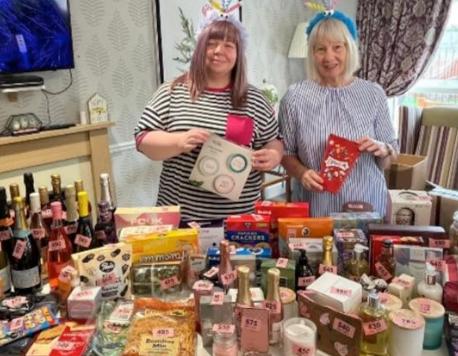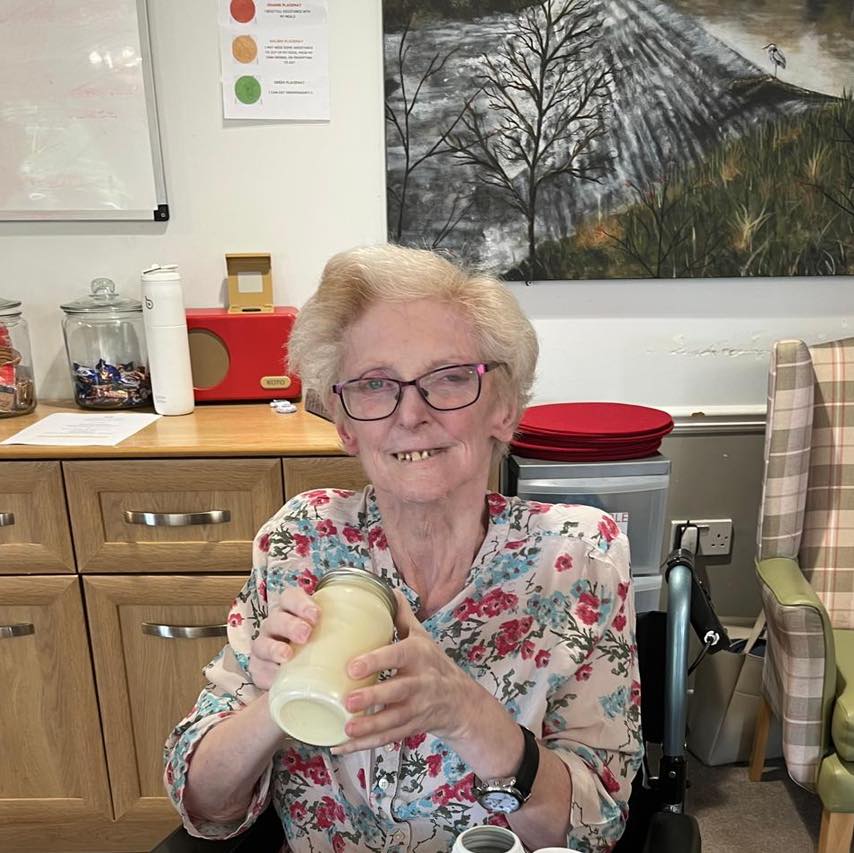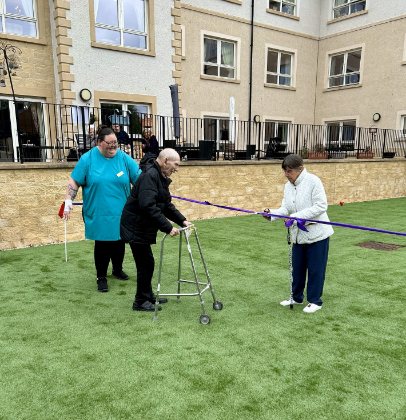How Electronic Health Records Help Care Home Residents

When you’re choosing a care home for yourself or a loved one, peace of mind matters. You want to know that every detail of care is carefully recorded, safely managed, and shared with the right people at the right time. That’s where electronic health records come in.
Gone are the days of paper medical records tucked away in filing cabinets. Today, many leading care homes are turning to secure, digital systems like Nourish to support more personalised and responsive care. These electronic health record systems store essential information from a resident’s medical history to daily notes, making it easier for health care professionals to work together and deliver care effectively. By enabling seamless information sharing, EHRs help professionals coordinate and deliver care that meets each resident’s needs.
Understanding Electronic Health Records in Care Homes
Electronic health records, or EHRs, are digital versions of a person’s medical records. In a care home setting, this means that everything from care plans and daily observations to medication records and clinical notes are safely stored in one secure place. EHRs function as an electronic system for managing patient data. Instead of relying on paperwork or memory, health care professionals can access accurate, up-to-date information whenever they need it.
By having a full picture of someone’s medical history and personal needs, carers can respond more quickly and make better-informed decisions. Whether it’s managing long-term conditions, supporting rehabilitation, or simply noting a change in appetite or mood, electronic records allow for more joined-up care.
Nourish is a great example of an electronic health record system that has been built specifically for health and social care. It’s designed to be simple to use while capturing the important details that matter in day-to-day care. The use of structured data in systems like Nourish is essential for efficient care delivery and easy data retrieval. EHRs store a wide range of information, including patient information, care plans, medication records, and clinical notes. Accurate data input is crucial for ensuring reliable records and supporting sound care decisions. This kind of technology helps ensure that all members of the care team – including nurses, carers, GPs, visiting health professionals, and other healthcare professionals such as community nurses or physiotherapists – have access to the same information, reducing the risk of missed details or miscommunication.
What makes EHR systems like Nourish especially valuable in a care home is how they bring together health data from a range of sources, creating a fuller picture of each individual’s needs. By replacing fragmented paper medical records with a centralised digital system, care homes can provide safer, more consistent care across the board.
How Nourish Supports Better Patient Care
At the core of every good care home is the ability to respond to residents’ needs with consistency and kindness. Nourish helps make this possible by giving health care professionals access to real-time information, all in one secure place. This includes everything from medication records, clinical notes, progress notes, test results, to daily observations and alerts. Daily observations can include vital signs, such as blood pressure, providing essential clinical data that is tracked over time. With this level of detail at their fingertips, carers can tailor support in a way that truly reflects each person’s needs, preferences and health history.
One of the key benefits of electronic health record systems like Nourish is that they improve how decisions are made. Staff aren’t working in the dark or relying on memory – they can refer to a resident’s up-to-date medical history, track trends over time, and quickly spot any changes in condition. Clinical decision support is a core feature that aids staff in making evidence-based decisions, improving care quality and workflow efficiency. Whether it’s noting a change in mobility or responding to a drop in appetite, carers can act swiftly and with confidence. For example, if a resident begins eating less or drinking less than usual, this can be recorded straight away, flagged to the senior team, and followed up quickly. That may mean involving a nutritionist, adjusting meal choices, or reviewing medication. This kind of timely response is what often makes the biggest difference to residents’ health, helping to prevent issues like dehydration or unplanned weight loss before they develop further.
Nourish also supports collaboration between care staff and external healthcare providers. Because the system allows information to be shared securely with GPs, district nurses, physiotherapists and other professionals, it becomes easier to work as a team around the individual. Access to sensitive data is provided only for direct care purposes, ensuring data security and confidentiality. This joined-up approach is especially important for people living with complex conditions, as it ensures everyone involved in their care is on the same page.
With better tools to track and monitor care, Nourish also plays a part in reducing avoidable hospital visits and supporting early intervention. By supporting clinical decision making, electronic records help care teams plan ahead, respond more effectively to health changes and keep residents well in their home for longer and preventing avoidable trips to hospital.
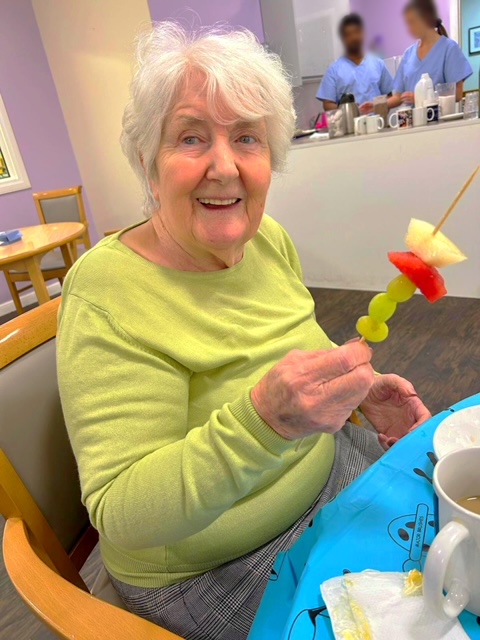

Benefits of Electronic Health and Medical Records for Families and Loved Ones
When a loved one moves into a care home, families often want to feel included, informed and reassured. One of the ways Nourish helps achieve this is by improving how care is recorded and shared. Electronic records don’t just support the care team – they also offer peace of mind to families by ensuring nothing is missed and that updates can be shared in a timely and consistent way.
With paper medical records, it’s easy for small but important data and details to get lost or overlooked. By contrast, an electronic patient record allows healthcare professionals to log everything from meal preferences to medication changes, giving a clear and reliable picture of day-to-day care. Such data, covering a wide range of patient and clinical information, is managed more effectively in digital systems. This transparency helps build trust. Families know that if there’s a change in routine, health, or wellbeing, the care home can act quickly and explain clearly what steps have been taken.
For example, if a resident becomes less mobile or starts to need more help at mealtimes, this can be recorded in real time. Families can be kept up to date and involved in decisions about care, whether it’s through direct conversations with the care team or, in some cases, through secure digital access to updates. The protection of confidential data and privacy is a priority, ensuring sensitive information is only accessible to authorised individuals. Being kept in the loop like this helps reduce anxiety and strengthens the relationship between the home and the people who matter most.
Nourish also supports more personalised care, which families often appreciate. By keeping detailed health records and clinical notes, the care team can tailor daily routines, activities and support to suit individual patients. Whether it’s making sure Mum’s tea is just how she likes it, or noting that Dad prefers a later breakfast, small details like these are recorded and respected. Use of an EHR system like Nourish reflects a commitment to treating residents not just as patients, but as people, with their own needs, histories, and preferences. And for families, knowing that this level of care is possible can make all the difference when choosing the right home.
Supporting the Whole Health System
While the day-to-day benefits of Nourish are felt most clearly by residents and their care teams, the impact reaches far beyond the walls of the care home. Electronic health record systems like Nourish play a vital role in supporting the wider health and social care system, helping to improve coordination, enable data sharing, reduce duplication, and ultimately enhance health outcomes and service delivery across the board. Interoperability between health systems and other health systems is essential for maximising these benefits.
Because Nourish is built to work alongside other services, it allows for better communication and data sharing between healthcare settings. Whether a resident needs to visit hospital, attend a GP appointment, or receive care from community nurses, having accurate and up-to-date information readily available ensures smoother transitions and safer care. This kind of health information exchange, often facilitated by health information exchanges (HIEs), is key to reducing avoidable delays, repeated assessments, and medication errors. The exchange of electronic health information between systems also presents challenges, such as ensuring privacy and standardisation, but brings significant benefits for care coordination.
The ability to share clinical data quickly and securely with primary care services, hospitals, or allied health professionals also means that decisions can be made with a full understanding of the person’s needs. EHRs aggregate information from multiple sources, including laboratory data, laboratory results, and insurance claims, providing a comprehensive view of patient records. For example, if a GP is reviewing a resident’s medication or investigating a new symptom, having access to a full electronic patient record – including observations, notes, previous treatments, and structured laboratory results – supports quicker, more accurate decisions.
For carers, the use of Nourish also helps reduce the time spent chasing information or repeating paperwork. That time can then be spent where it matters most – with residents. While families may not always see this work directly, the benefits are very real. A well-informed GP, a hospital stay that’s better planned, or a faster response to a health concern, these are the quiet but crucial ways modern electronic records support safer, better care for everyone involved.
From Paper to Progress – Why This Shift Matters
For years, care homes have relied on handwritten notes, paper charts and filing systems, collectively known as paper records, to manage everything from medication schedules to daily wellbeing checks. While these systems served their purpose, they often left room for gaps, delays or errors. By moving to electronic records with systems like Nourish, care homes are making a meaningful step forward – one that’s less about technology for its own sake and more about better outcomes for residents.
Electronic records remove many of the common risks that come with paper medical records. There’s no risk of files going missing, handwriting being misread, or notes being lost between shifts. Information is stored securely and shared only with those who need it, helping care teams stay aligned and accountable. Managing source data within these digital systems is crucial for ensuring compliance, data quality, and reliability. It means that when something changes, whether it’s a resident’s mobility, mood or medication, it’s recorded straight away and followed up without delay. The electronic health record often includes the GP record as a key component, capturing comprehensive medical information from primary care consultations.
This shift also frees up time. Carers can spend less time on paperwork and more time with the people they’re supporting. Rather than writing up notes at the end of a shift, staff can log care as they go, using simple handheld devices. That immediacy improves accuracy and gives a clearer picture of each resident’s day, which is especially valuable for supporting those living with dementia or other complex needs. EHRs store a wide range of medical information, including diagnoses, medications, allergies, and risk factors, providing a holistic view of each resident’s health.
Most importantly, electronic health record systems help ensure that care is not just reactive, but proactive. With accurate clinical data at their fingertips, care teams can spot trends, plan ahead and intervene early, leading to significant improvements in clinical care. Whether it’s preventing falls, catching signs of dehydration, or reviewing the effects of a new medication, the goal is always the same: safer, more personalised care for every resident. For families, the move to digital care planning offers reassurance that nothing is left to chance. It shows a commitment to best practice, transparency and the highest possible standards. At its heart, this is what the shift from paper to progress is really about – giving residents not only the care they need, but the personal attention, dignity and respect they deserve every single day.
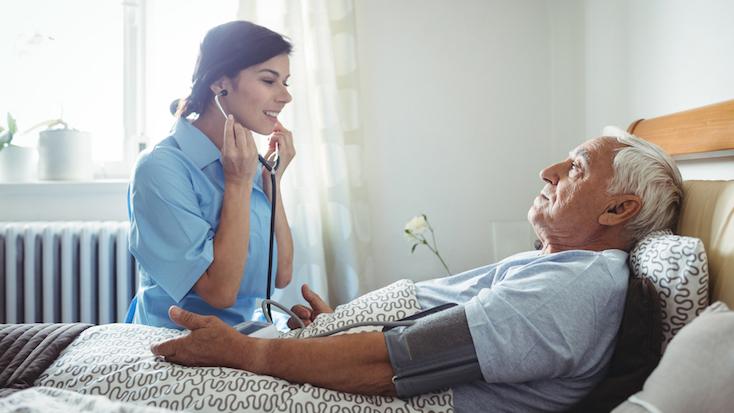
Putting Residents First Through Smarter Care
Systems like Nourish may work quietly in the background, but their impact shows in the quality and consistency of care each resident receives. At Haddington Care Home we're replacing paper-based systems with secure, easy-to-use electronic health records that are better equipped to meet each individual’s needs. From safer medication management to quicker responses to changes in health, EHR systems support care that’s well-delivered and truly person-centred. We'll let you know when we've fully implemented Nourish in our home and share how it's making life even better for residents.
For more information on how we make sure our residents are enjoying life every day please get in touch. We'd love to invite you for a private tour, a cup of tea and a slice of homemade cake.

